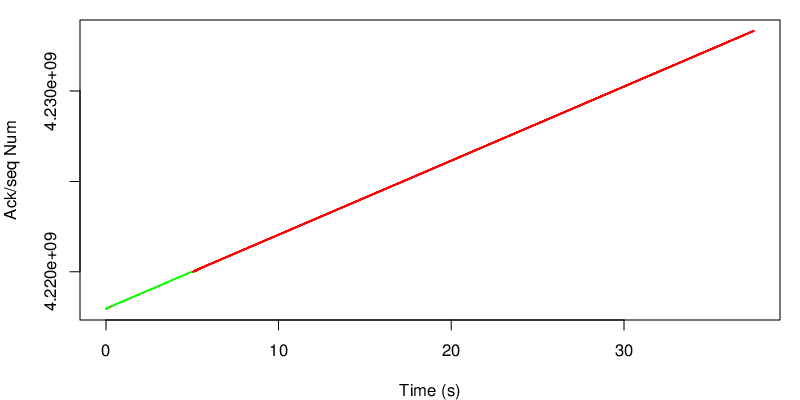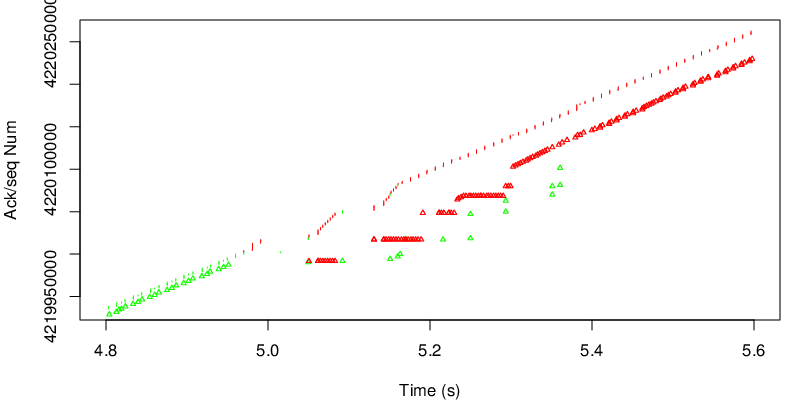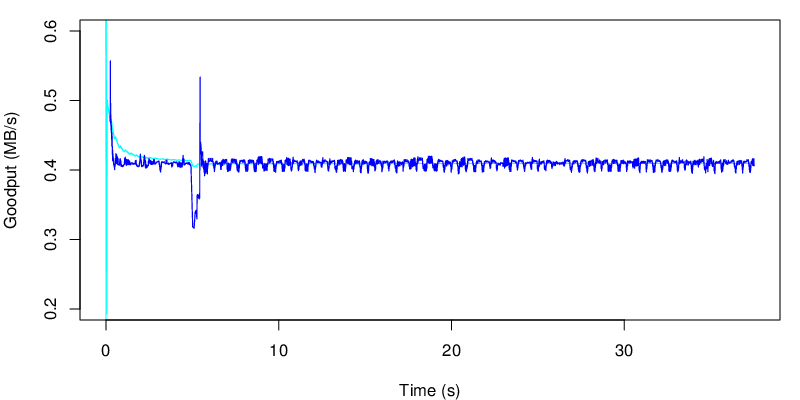mptcptrace demo, experiment two
This is the second post of a series of five. Context is presented in the first post.
Second experiment
| Green at 0s: |
|
|---|---|
| Green at 5s: |
|
| Red: |
|
| Client: |
|
In this scenario, we change delay and the loss rate of the green link after 5 seconds.
Just like we did for the first experiment, we take a look at the ack/seq graph.
As expected, we see the shift from the green path to the red path after 5 sec. We will now take a closer look to what happens around 5 seconds, when the delay and the loss rate rise.
Because of the loss, the congestion window of the green subflow starts to shrink. As a consequence, MPTCP starts to send segments over the red subflow because there is not enough space in the green congestion window to sustain the rate. The spacing between the green segments and green triangle is different than the spacing between the red segments and the red triangles. This reflects the different RTT on the green subflow and on the red subflow. Because the green link is lossy and has a longer delay, we observe duplicate acks from the red link because we miss some segments sent on the green link at the receiver. However on the red link, even if we have a higher delay, we don’t have many losses. This leads to jump in acks during the transition. We can see the stair shape.
As we did for the previous experiment, we now take a look at the evolution of the goodput.
We see the transition after 5 seconds on the blue line. The consequences over the cyan line is however quite small. But let’s zoom a bit on this specific event.
As we can see after five seconds there is a drop in the “instantaneous” goodput, however this change does not really last enough time to have an impact on the average goodput. If the application is sensitive to goodput variation this may be an issue. If the application is not, the user should barely see the difference.



